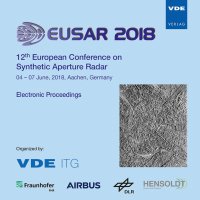Characterization of Arctic Sea Ice using L, S and X-Band Fully Polarimetric Airborne F-SAR System
Konferenz: EUSAR 2018 - 12th European Conference on Synthetic Aperture Radar
04.06.2018 - 07.06.2018 in Aachen, Germany
Tagungsband: EUSAR 2018
Seiten: 5Sprache: EnglischTyp: PDF
Persönliche VDE-Mitglieder erhalten auf diesen Artikel 10% Rabatt
Autoren:
Singha, Suman (Remote Sensing Technology Institute (IMF), German Aerospace Center (DLR), Henrich Focke Str. 4 28199 Bremen Germany)
Jaeger, Marc (Microwaves and Radar Institute (HR), German Aerospace Center (DLR), Münchener Str. 20, 82230 Weßling, Germany)
Inhalt:
Sea ice monitoring has attracted increasing attention over the last few decades. Besides the scientific interest in sea ice, the operational aspect of ice charting is becoming more important due to growing navigational possibilities in an increasingly ice free Arctic. Despite proven sea ice classification achievements on single polarimetric SAR data, a fully automated, general purpose classifier for single-pol data has not been established due to large variation of sea ice manifestations and incidence angle impact. Recently, through the advent of polarimetric SAR sensors, polarimetric features have moved into the focus of ice classification research. The higher information content four polarimetric channels promises to offer greater insight into sea ice scattering mechanism and overcome some of the shortcomings of single-polarimetric SAR for sea ice type discrimination. In this study, fully polarimetric data in L, S and X-band simultaneously acquired by DLR’s FSAR system are investigated. Specific dataset were acquired in the framework of DLR-DALO ARCTIC’15 campaign over west Greenland. Proposed supervised classification algorithm consists of two steps: The first step comprises a feature extraction, the results of which are ingested into a neural network classifier in the second step for training and validation. Based on the common coherency and covariance matrix, we extract a number of features and analyze the relevance and redundancy by means of mutual information for the purpose of sea ice classification. Usefulness of different polarimetric features at different frequency bands will be investigated using mutual information analysis along with quantitative comparison of classification results at different frequency bands. Validation of sea ice classification results with Across Track Interferometry (XTI) - derived freeboard measurement is ongoing and initial results are reported.


